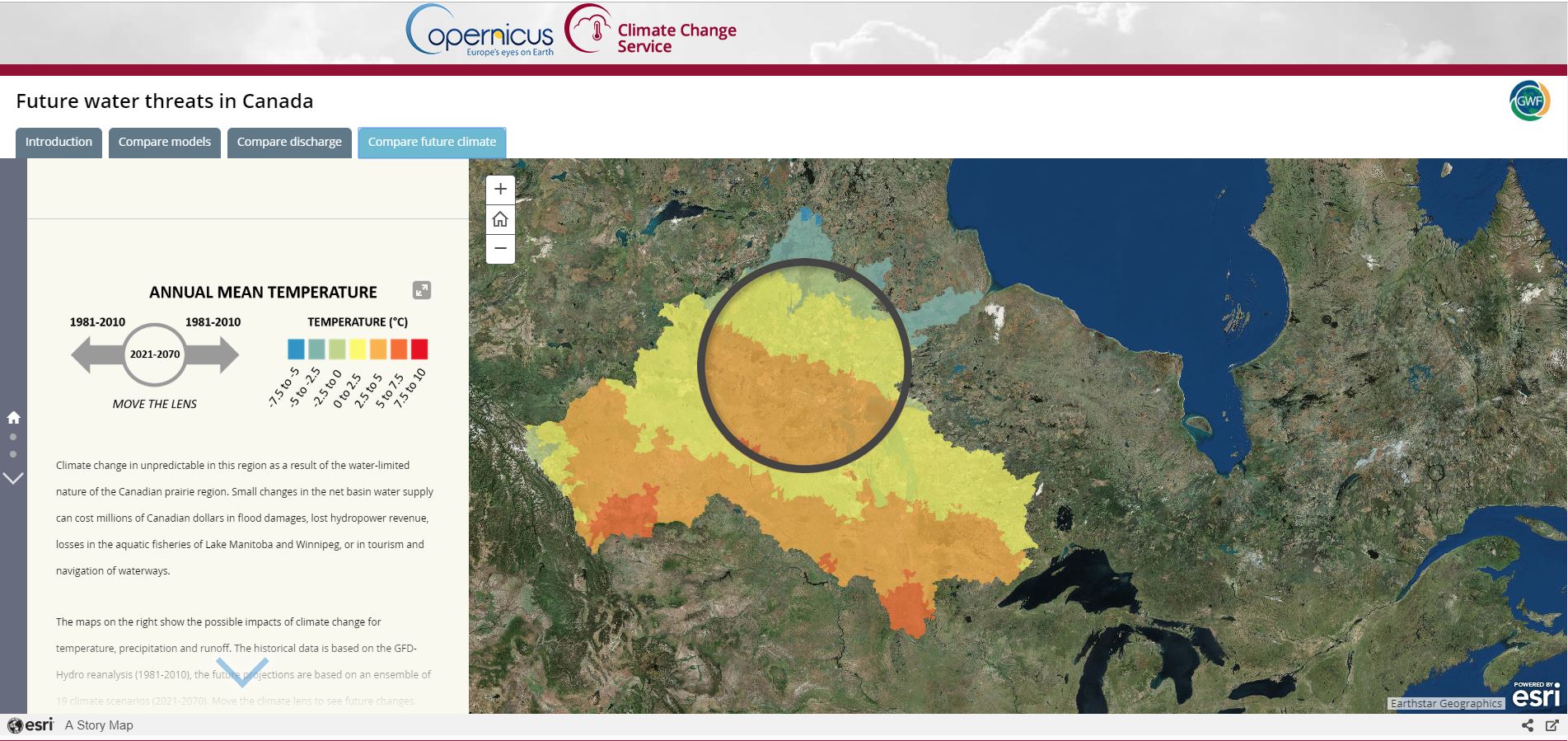A5 carefully benchmarks the GWF and collaborator land surface hydrologic models including MESH, VIC, WRF-Hydro (as applied by GLERL), HYPE, and GEM-Hydro amongst others to explore and improve modelling processes. Initial work with Lake Erie watershed modelling will be followed by the Great Lakes Basin and Saskatchewan-Nelson-Churchill River Basins (sub-basins selected in consultation with collaborators) in six years.
In Phase I of IMPC (Lake Erie and Great Lakes), models will be compared from both an ‘out-of-the-box’ perspective and driving a community effort to collectively identify common datasets, forcing datasets and model performance measures. The first phase developed frameworks to collaboratively make decisions and provide unified model setup information to ease the comparison of individual modeling decisions. Phase I also identified the large group of collaborators significantly exceeding the project team initially suggested. The project is based on three main objectives: comparing models for low-impact streamflow gauges, streamflow gauge stations most downstream to the lake(s), and comparing models based on their ability to simulate net basin supply.
In Phase II (Nelson-Churchill), we will apply the unified methodology for modelling intercomparison derived in Phase I, including time frames for model analysis, performance metrics, input data selection, and forcing data sets. The analysis will evaluate how and why models differ from a process-based perspective in unregulated basins, and evaluate methods of representing human impacts in the basin and their relative influence on model performance.
Area of focus:
- Lake Erie (GRIP-E)
- Great Lakes (GRIP-GL)
- Nelson-Chruchill (Nelson MiP)
Models in Use:
- MESH
- VIC
- WRF-Hydro
- HYPE
- GEM-Hydro
- Many more.
In the News
IMPC Researcher Featured as Canadian Showcase for Copernicus Climate Change ServiceDr. Tricia Stadnyk mobilizes research knowledge with Manitoba Hydro to explore uncertainty in future streamflows and data inputs. Read more... March 1, 2019 |
|
|
|
Year 1-3: Develop a framework for inter-comparison of models (including at least MESH, VIC, HYPE, and GEM-Hydro) starting with Lake Erie. Complete Lake Erie comparison.
Year 4: Determine how models differ in terms of streamflow prediction capability with user-led model setup and evaluation based on standard forcing data (Nelson-Churchill)
Year 5: Using standardized data for model setup, determine why models differ from a process-based perspective (Nelson-Churchill).
Year 6: Apply models in regulated basins with streamflow and process outputs to assess model set up accuracy and performance in representing human impacts (Nelson-Churchill).
Progress so far:
(i) several additional models are participating in at least one objective of the comparison process (WATFLOOD, RAVEN-GR4J, SWAT);
(ii) framework for model inter-comparison is developed and several phases of comparison (e.g. using the same meteorological forcing data and calibration strategy) are completed for Lake Eerie with a sub-set of models (e.g. HYPE);
(iii) the Great Lakes scale comparison from deterministic assessment perspective is expected to be complete by Y3, including the generation of a net basin supply for each lake.
Lead:
 |
Bryan TolsonAssociate Professor |
|
 |
Trish StadnykAssociate Professor |
Co-Leads:
 |
Saman RazaviAssistant Professor
|
Highly Qualified Personnel:
|
Julie Mai Postdoctoral Fellow |
Research: Watershed hydrological modelling; water quality modelling |
|
|
Hongren Shen PhD |
Research: Hydrological modelling |
|
|
Oyemonbade (Hervé) Awoye Postdoctoral Fellow |
Research: Climate data analysis and hydrological modelling |
|
|
Jack Kostick Undergraduate |
Research: Climate data analysis and hydrological modelling |
-
Maier H.R., Razavi S., Kapelan, Z., Matott L.S., Kasprzyk J., and Tolson, B.A., (2019), Introductory Overview: Optimization using Evolutionary Algorithms and other Metaheuristics, Environmental Modelling & Software (Invited Contribution).
-
Wong, J.S., Razavi, S., Bonsal, B.R., Wheater, H.S., Asong, Z.E. (2017), Inter-comparison of daily precipitation products for large-scale hydro-climatic applications over Canada, Hydrol. Earth Syst. Sci. doi: 10.5194/hess-21-2163-2017.








